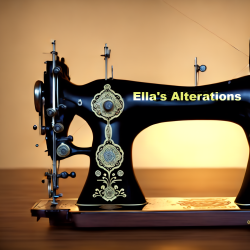Clothing alterations are a common practice that many individuals engage in to customize the fit and style of their clothing. However, this service can often come with a high price tag that leaves customers wondering why clothing alterations are so expensive. In this essay, we will explore the various factors that contribute to the high cost of clothing alterations and provide insight into how these costs can be minimized.
- The Cost of Labor: One of the main reasons why clothing alterations are so expensive is the cost of labor. Alterations require a skilled tailor or seamstress to make precise adjustments to the garment, which can be a time-consuming process. Additionally, many tailors and seamstresses charge by the hour, which can quickly add up. For example, a simple hem on a pair of pants can take anywhere from 45 minutes to an hour to complete, depending on the complexity of the garment and the skill level of the tailor. As such, the cost of labor can be a significant factor in the overall price of clothing alterations. One must also consider the amount of time it takes to pin the dress, usually this process is time-consuming and can take up to an hour to pin it, trying the garment, and writing up the paperwork. Many times, the customer thinks it’s a quick alteration or they purchased the garment in a second hand store and think the price of the alterations should be less than what they payed for the garment, not considering the time the tailor or seamstress has to use to pin and alter the garments.
- The Complexity of the Garment: The complexity of the garment is another factor that can contribute to the high cost of clothing alterations. More complex garments, such as dresses with intricate beading or jackets with multiple layers, require more time and skill to alter. This can result in a higher cost for the customer, as the tailor or seamstress must spend more time and effort to complete the alterations. Additionally, certain materials, such as leather or suede, can be more difficult to work with and require specialized tools and techniques. This can further increase the cost of the alterations.
- The Type of Alteration: The type of alteration also plays a role in the overall cost of clothing alterations. Some alterations, such as hemming or taking in the sides of a garment, are relatively simple and can be completed quickly. However, other alterations, such as adjusting the sleeves of a jacket or reworking the waistline of a pair of pants, can be more complex and time-consuming. This can result in a higher cost for the customer, as the tailor or seamstress must spend more time and effort to complete the alterations.
- The Cost of Materials: In addition to the cost of labor, the cost of materials can also contribute to the high cost of clothing alterations. Many alterations require additional materials, such as thread, zippers, or buttons. These materials can add up quickly, especially if the garment requires a significant amount of alteration. Additionally, high-quality materials can be more expensive, which can further increase the cost of the alterations.
- The Location of the Tailor or Seamstress: The location of the tailor or seamstress can also affect the cost of clothing alterations. In areas with a high cost of living, such as major cities or affluent suburbs, tailors and seamstresses may charge more for their services to cover their own expenses. Conversely, in areas with a lower cost of living, the cost of clothing alterations may be lower. This is because tailors and seamstresses in these areas may not need to charge as much to cover their expenses.
- The Reputation of the Tailor or Seamstress: The reputation of the tailor or seamstress can also affect the cost of clothing alterations. Tailors and seamstresses with a strong reputation for quality work may charge more for their services, as customers are willing to pay a premium for their expertise. Additionally, tailors and seamstresses with a high demand for their services may charge more, as they can afford to be selective about the customers they work with.
- The Timeframe for the Alterations: Finally, the timeframe for the alterations can also affect the cost. Many tailors and seamstresses charge a rush fee for alterations that need to be completed quickly, such as within 24 hours.
